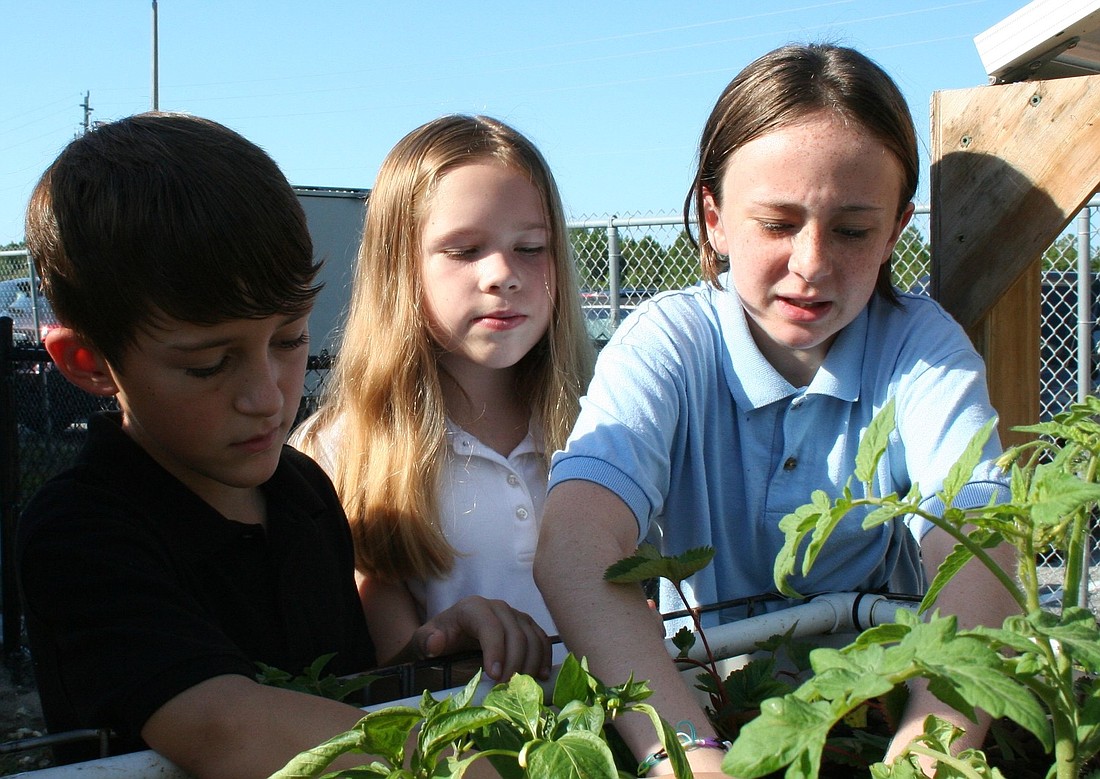- April 24, 2024
-
-
Loading

Loading

At first, the kids thought science teacher Ed Wolff’s grand idea — to build a solar-powered contraption where fish droppings from a tank of tilapia would fertilize a vegetable garden — was just too icky.
A few months later, they’d built it and were munching on the peppers and the mint.
“It was a fun experience learning how to grow plants using fish,” said 11-year-old Gage Winecoff, a student at Belle Terre Elementary School. “It was fun to see that it works, with our peppers and everything growing.”
Wolff proposed the idea last year to Gage and other fifth-graders in the Science Club. They’d wanted to do something unique, and an aquaponics pond would combine several science projects — raising fish, growing plants, using solar power.
“It’s to open the door, to create excitement,” Wolff said. “I make sure they all get to have a hands-on experience.”
Soon, Gage and the other kids were building the 4-foot tank and the solar panels that run its pumps, and planting the peppers, mint and strawberries in the garden suspended above it.
“We have a pump that pumps up the fishes’ waste, and it comes in with the water and gives nutrients to the plants, which then grow,” Gage said.
The water then filters down through the rocks holding the plants and, purified, drips back into the tank. The plants never need soil or fertilizer, and the tank — stocked with tilapia, which eat algae — never needs cleaning.
But the contraption took months to build. The trickiest part, the kids said, was constructing the solar panels that power the pump.
“You had to be very careful with the solar panels,” said Kayla Grude, 11. “They’re like potato chips” — thin and easy to crack.
Sarah Barret, 11, said the work could be tough. “It takes a lot of effort,” she said. “I didn’t expect the solar panels to be as fragile as they really are.”
After the pond was built, the kids did other experiments, comparing the growth rate of the plants fertilized through the aquaponics pond with plants that were grown in regular soil. The aquaponics plants grew about twice as fast.
“We gave peppers away until we were tired of giving them away,” Wolff said.
And Wolff even ended up with a bonus: 20 baby tilapia. When one of the tilapia in the aquaponics pond gave birth, there wasn’t enough space in the tank to keep them there, so now they live in an adapted fountain at Wolff’s home, serving as guinea pigs for occasional science experiments.
The pond will stay in place at the school, Wolff said, and serve as a teaching tool for future groups of fifth-graders. Kayla, Sarah and Gage, now in sixth grade, are pleased with how well the pond has worked. They’ll be around to help this year’s fifth-graders figure it out.
“It will be fun to guide them from our experience with Mr. Wolff,” Gage said. “The best thing was after creating it, watching it grow and work for a year without breaking down. It will be fun to show them how to do these things.”